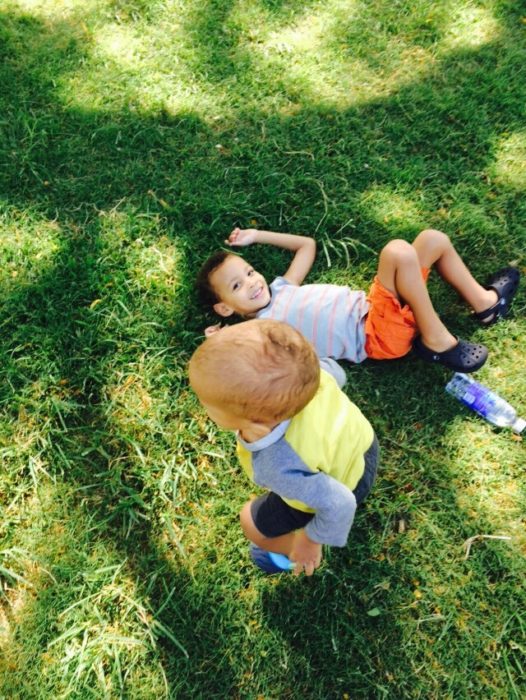![]()
By Andrea McCracken
As a parent, it can be difficult to remain objective and detached from the emotional storm cloud that erupts in our children. When my 6-year-old becomes emotional, it’s easy for me to be caught up in her big feelings, and mine. But watching how teachers at my child's school respond to big feelings has been helpful. I can be empathic to the children while remaining separate from their emotion, and I can learn from teachers doing the same.
My younger daughter and I have the privilege of being involved in a parent-participation nursery school. She is three now and has had such a great introduction to the complexities of school: the separation from her comfort zone of mom, dad, big sister and grandma; learning to navigate this other world both socially and emotionally; learning to trust her teacher and make a few friends; and feeling vulnerable when other kids come into her territory or aren’t friendly.
In the classroom as a teacher's assistant, I get to practice ways of interacting with the children, and learning what other children are like and how they react. It’s a continual reminder about how different we each are and how important it is to honor the uniqueness of each child.
On a recent opportunity to assist in the class, I observed a teacher have a big success with Staylistening when a toddler got upset.
The class of two and three-year-olds is made up of about 14 children. For 15-30 minutes, they have the chance to go play on the ‘big playground’ while it isn’t being used by the other classes.
 On this particular day, one of the boys, Tommy, wanted to stay inside the classroom to play with his good friend, Zack. But Zack lined up with the class, went outside and got engaged in outdoors play right away.
On this particular day, one of the boys, Tommy, wanted to stay inside the classroom to play with his good friend, Zack. But Zack lined up with the class, went outside and got engaged in outdoors play right away.
Meanwhile Tommy exploded into tears. He wanted to stay inside and he wanted Zack to stay with him.
One of the teachers stayed with Tommy and listened to his crying and asked a few questions to understand what was upsetting him. She held him and listened to his upset.
They stayed inside for a few minutes and then went outside to talk to Zack. With the help and support of his teacher, Tommy asked Zack if he would play inside with him. Zack wasn’t interested. Tommy cried harder and his teacher held him and listened to his upset some more. In fact, she stayed with Tommy until he stopped crying.
As the tears stopped suddenly Tommy was able to see how much fun his friends were having outside. He watched for a few minutes with his teacher. Then he left her side and began to play at the water centre with Zack.
Zack and Tommy played happily and enjoyed the rest of the school day. The storm cloud had passed and Tommy returned to his usual sunny disposition.
It reminds me how simple and elegant these parenting tools are when my own emotions are not in the way. Just 10 minutes of attentive listening from his teacher changed his entire day, and allowed him to have fun and learn with his friends.
Why it Works:
Ever noticed that small triggers can cause big upsets? This is because children often store a backlog of feelings that wait to unload. Staylistening gives space for a child to cry until his upset is resolved and those fears can clear. That's why you'll often see a child become really happy and content after a big cry. Read about the Powerful Healing Results of Staylistening and find out why it's important to say very little when a child cries.
Toddlers minds race as they grapple with new people, rules and situations, almost daily. While they can be sweet, loving and generous, it can seem to parents like they've boarded an emotional rollercoaster with their child reaches the toddler years. Read about the changes taking place in your toddler's emotional life and find out how you can help in 6 Tips for Easing the Transition to Toddlerhood
Andrea McCracken is a candidate in the Hand in Hand Instructor Certification program.